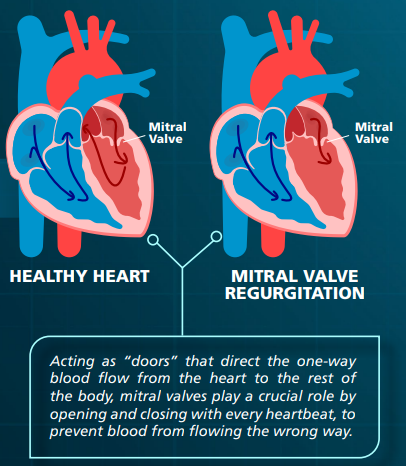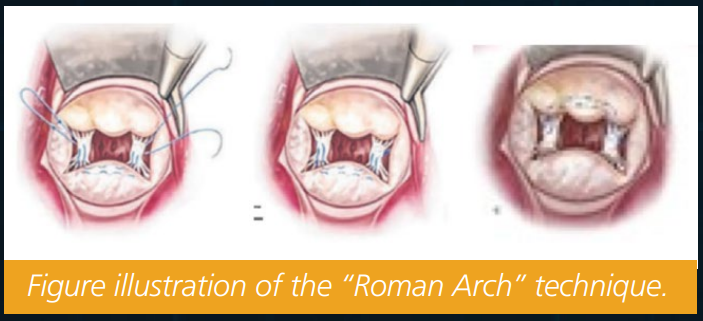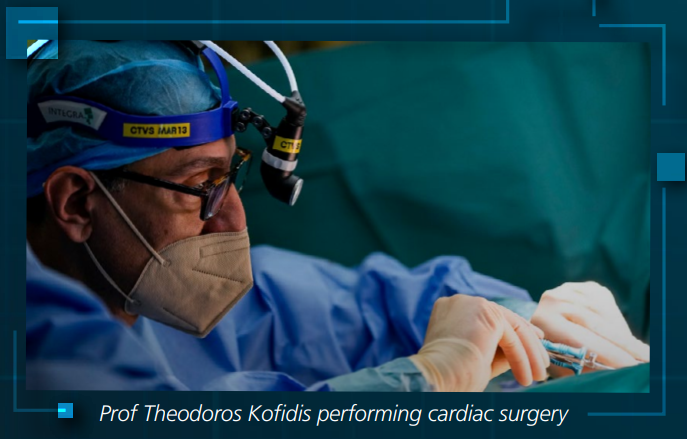A New Pathway In Mitral Valve Heart Surgery
Improved control for surgeons, Better surgery outcomes for patients
PULSE Issue 42 | February 2024

Commonly known as “leaking heart valve”, mitral valve
regurgitation is the most common form of heart valve disease
where patients experience a backward leaking of blood in
their heart, which can result in complications over time, such
as atrial fibrillation and heart failure.
While it is better for mitral valves
to be repaired rather than replaced
to avoid possible complications such
as infection or clotting, traditional
techniques used in current valve
repair surgeries require substantial
experience on the surgeon’s part to
decide on the positioning, length,
and the number of cords required
during the procedure. This means
an increased level of technical
complexity and a steeper learning
curve for less experienced surgeons,
and may result in varying surgical
results for patients.
Driven to deliver more intuitive
techniques and consistent patient
outcomes, Prof Theodoros Kofidis,
Head and Senior Consultant,
Department of Cardiac, Thoracic
and Vascular Surgery (CTVS),
NUHCS, has crafted a new set of 12
mitral valve techniques improving
on current established procedures,
with inspiration from Roman
architecture. Termed “The Singapore
Correction”, the techniques allow
for better surgical control through
simplifying current procedures, to
achieve more uniformity in patient
results each time.
 In the world of cardiac surgery where
precision is paramount, equipping
surgeons with greater confidence
in the operative procedure helps to
unlock the possibility of salvaging the use of the heart’s
original mitral valve rather
than replacing it. To this
end, the “Roman Arch”
technique enables the
surgeon to position the
suture by using the heart’s
own papillary muscle tips
as a guide, which reduces the
risk of surgical errors. Like a sturdy
bridge connecting the damaged
valve to both papillary muscles, the
“Roman Arch” allows the valve repair
to be done using just a single running
suture. This not only simplifies the
procedure for the surgeon, but also
reduces the risk of complications for
patients.
In the world of cardiac surgery where
precision is paramount, equipping
surgeons with greater confidence
in the operative procedure helps to
unlock the possibility of salvaging the use of the heart’s
original mitral valve rather
than replacing it. To this
end, the “Roman Arch”
technique enables the
surgeon to position the
suture by using the heart’s
own papillary muscle tips
as a guide, which reduces the
risk of surgical errors. Like a sturdy
bridge connecting the damaged
valve to both papillary muscles, the
“Roman Arch” allows the valve repair
to be done using just a single running
suture. This not only simplifies the
procedure for the surgeon, but also
reduces the risk of complications for
patients.

"The new surgical techniques
for mitral valve repair allow for
more standardised outcomes in
patients…so more (patients) get
to keep their valves, rather than
have them replaced and live with
the risk of related complications."
Prof Theodoros Kofidis, Head and Senior Consultant,
Department of Cardiac, Thoracic and
Vascular Surgery (CTVS), NUHCS
Applied by the Department of CTVS at
NUHCS, the techniques have since been
used in the surgeries of 10 patients
with good outcomes, and have been
adopted by international hospitals such
as those in Italy and Greece.
Enhancing patient safety and
potentially life-changing outcomes
in cardiac surgery set-ups, this
innovation unlocks a new chapter
in mitral valve treatment – one of
the most common heart surgeries
performed today.
